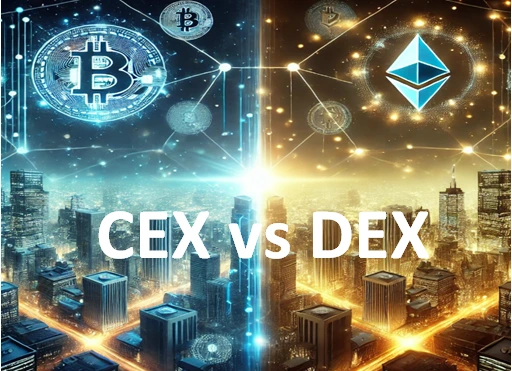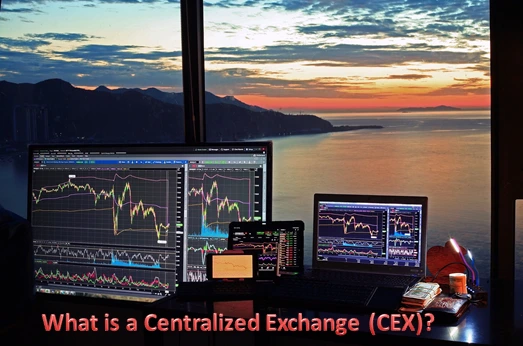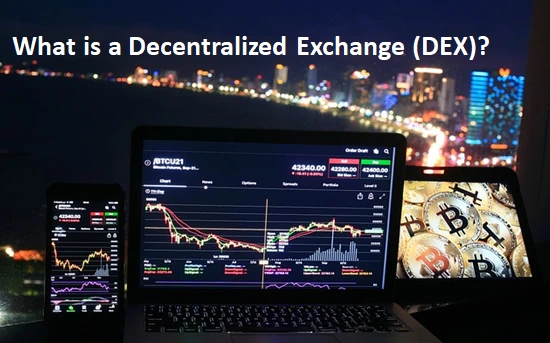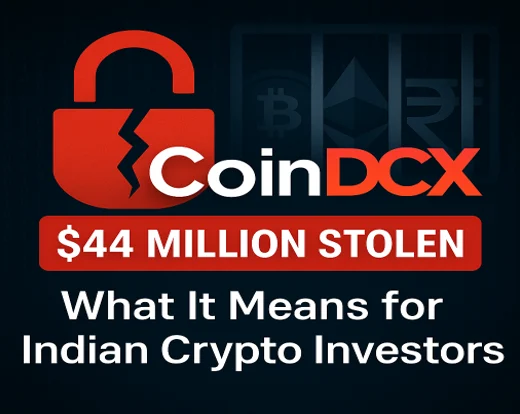
CEX vs DEX: A Comprehensive Comparison for Crypto Enthusiasts
The world of cryptocurrency is rapidly evolving, offering endless opportunities for both seasoned investors and curious newcomers. As digital assets become more mainstream, choosing the right platform to trade and invest becomes increasingly important. Two major players dominate this space: Centralized Exchanges (CEXs) and Decentralized Exchanges (DEXs). Each offers unique advantages and challenges, shaping the way users interact with cryptocurrencies. In this article, we will explore the key differences between CEXs and DEXs, helping you navigate the dynamic crypto landscape and make informed decisions that align with your financial goals.
What is a Centralized Exchange (CEX)?

Centralized Exchanges (CEXs) are platforms that facilitate the trading of cryptocurrencies by acting as intermediaries between buyers and sellers. Unlike decentralized exchanges (DEXs), CEXs are managed by centralized organizations, which oversee the trading process, maintain user funds, and provide customer support. Popular examples of CEXs include Binance, Coinbase, and Kraken. These platforms are known for their user-friendly interfaces, liquidity, and advanced trading features.
How Does a Centralized Exchange Work?
CEXs function similarly to traditional stock exchanges. Users create accounts, deposit funds (fiat or cryptocurrencies), and place buy or sell orders. The exchange matches these orders using its internal order book and executes trades. The centralized nature means that the platform holds custody of user funds, which can simplify the trading process but also introduces certain risks.
Advantages of Centralized Exchanges
1. User-Friendly Interface:
CEXs are designed with beginners in mind, offering intuitive platforms and features such as charts, tutorials, and mobile apps.
2. High Liquidity:
Centralized exchanges typically have high trading volumes, ensuring that users can buy or sell assets quickly without significant price slippage.
3. Wide Range of Trading Options:
Many CEXs provide advanced trading features, such as margin trading, futures, staking, and lending.
4. Customer Support:
Unlike decentralized platforms, CEXs often have dedicated customer service teams to assist users with issues like account recovery or transaction disputes.
5. Fiat Integration:
Most CEXs allow users to deposit and withdraw fiat currencies, making it easier to transition from traditional finance to cryptocurrencies.
Disadvantages of Centralized Exchanges
1. Custodial Risk:
Since CEXs hold user funds, they are attractive targets for hackers. A breach can lead to significant losses for both the platform and its users.
2. Lack of Privacy:
Most centralized exchanges require users to complete Know Your Customer (KYC) verification, which compromises anonymity.
3. Centralized Control:
Decisions made by the platform’s management can impact users, such as delisting assets or freezing accounts during disputes.
4. Regulatory Risks:
Being centralized entities, CEXs are subject to government regulations, which can lead to restrictions or even shutdowns in certain regions.
5. Higher Fees:
Compared to decentralized exchanges, CEXs often charge higher transaction and withdrawal fees.
Top 5 Centralized Exchanges Based on Trading Volume
Here are the leading centralized exchanges as of today, ranked by their daily trading volume:
1. Binance:
- Daily Trading Volume: Over $20 billion.
- Features: Spot trading, futures, staking, and a wide variety of cryptocurrencies.
- Strengths: High liquidity, advanced tools, and global reach.
2. Coinbase:
- Daily Trading Volume: Approximately $2 billion.
- Features: User-friendly for beginners, strong regulatory compliance, and fiat integration.
- Strengths: Trusted by institutional and retail investors alike.
3. Kraken:
- Daily Trading Volume: Around $1 billion.
- Features: Spot trading, futures, margin trading, and staking.
- Strengths: Strong security measures and global availability.
4. Bybit:
- Daily Trading Volume: Over $1 billion.
- Features: Derivatives trading, spot trading, and staking.
- Strengths: Popular for leverage trading and robust trading tools.
5. KuCoin:
- Daily Trading Volume: Around $800 million.
- Features: Spot trading, futures, lending, and staking.
- Strengths: Wide range of altcoins and innovative features like trading bots.
Centralized Exchanges (CEXs) play a crucial role in the cryptocurrency ecosystem by offering a reliable and user-friendly environment for trading digital assets. While they provide significant advantages such as liquidity, advanced tools, and customer support, users should also be aware of the risks, including custodial and regulatory challenges. For those new to cryptocurrency, starting with a trusted CEX like Binance or Coinbase can be a good entry point. However, as you grow more familiar with the crypto space, exploring decentralized alternatives may also be worth considering to diversify your trading strategies and reduce reliance on centralized entities.
What is a Decentralized Exchange (DEX)?

A Decentralized Exchange (DEX) is a cryptocurrency trading platform that operates without a central authority. Instead of relying on intermediaries, DEXs use blockchain technology and smart contracts to enable peer-to-peer transactions. Users retain full control of their funds and private keys, eliminating the need for a third party to facilitate trades.
In contrast, a Centralized Exchange (CEX) acts as an intermediary, holding users’ funds and private keys while facilitating trades on their behalf. Popular examples of CEXs include Binance, Coinbase, and Kraken. While CEXs provide high liquidity and user-friendly interfaces, they are often criticized for being prone to hacks and requiring users to trust the platform with their funds.
Advantages of DEXs
1. Decentralization and Security:
- DEXs reduce the risk of hacking, as funds are stored in users’ wallets instead of a central repository.
- Transactions are executed via smart contracts, enhancing transparency.
2. Anonymity:
- Most DEXs don’t require Know Your Customer (KYC) procedures, allowing users to trade without revealing personal information.
3. Global Accessibility:
- Anyone with a cryptocurrency wallet and internet access can use a DEX, making it highly inclusive.
4. No Censorship:
- DEXs are less likely to restrict or block users based on geographic or political considerations.
5. Control Over Funds:
- Users retain full control of their private keys and assets, reducing counterparty risks.
Disadvantages of DEXs
1. Limited Liquidity:
- Compared to CEXs, many DEXs struggle with lower trading volumes and liquidity, which can lead to slippage.
2. Complex User Interface:
- The user experience on DEXs can be intimidating for beginners due to the technical knowledge required.
3. Smart Contract Risks:
- While smart contracts are secure, vulnerabilities in the code can lead to potential exploits.
4. Limited Features:
- Advanced trading tools and order types (e.g., stop-loss orders) are often missing on DEX platforms.
5. Slower Transactions:
- Since transactions rely on blockchain networks, they can be slower and more expensive during times of high network congestion.
Top 5 DEXs Based on Trading Volume
1. Uniswap:
- Built on the Ethereum blockchain, Uniswap is a pioneer in the DEX space. It uses an Automated Market Maker (AMM) model to facilitate trading and boasts a wide range of tokens.
2. PancakeSwap:
- Operating on Binance Smart Chain (BSC), PancakeSwap offers lower fees and faster transactions compared to Ethereum-based DEXs. It’s particularly popular for trading BEP-20 tokens.
3. dYdX:
- Focused on perpetual contracts and derivatives, dYdX is a favorite among advanced traders. It combines decentralization with sophisticated trading features.
4. Curve Finance:
- Known for its efficient trading of stablecoins and low-slippage environment, Curve Finance is a go-to platform for liquidity providers.
5. SushiSwap:
- A fork of Uniswap, SushiSwap offers additional features like staking, yield farming, and governance mechanisms for token holders.
Decentralized Exchanges are reshaping the way we trade cryptocurrencies, offering unparalleled security and control. While they have their limitations, the rapid advancements in blockchain technology are addressing these challenges, making DEXs increasingly competitive with their centralized counterparts. Whether you’re a seasoned trader or a crypto enthusiast, exploring DEXs could open up new opportunities in the decentralized finance ecosystem.
Key Differences Between CEX vs DEX
| Feature | Centralized Exchange (CEX) | Decentralized Exchange (DEX) |
|---|---|---|
| Control of Funds | Held by the exchange | Fully controlled by users |
| Privacy | Requires KYC/AML verification | Generally anonymous |
| Liquidity | High due to large user base | Lower, depends on user participation |
| Security Risks | Vulnerable to hacks and breaches | Prone to smart contract bugs |
| Ease of Use | Beginner-friendly interfaces | Complex for new users |
| Regulation | Subject to regulations | Operates with minimal regulation |
| Token Availability | Limited to listed assets | Broad, includes new and niche tokens |
Which One Should You Choose?
The choice between a CEX and a DEX ultimately depends on your trading needs and risk tolerance.
Choose a CEX if:
- You are a beginner seeking a simple and secure way to trade.
- You prioritize liquidity and advanced trading tools.
- You value customer support for troubleshooting.
Choose a DEX if:
- You prioritize privacy and control over your funds.
- You are comfortable with using blockchain wallets and smart contracts.
- You want early access to new and emerging tokens.
Conclusion
Both Centralized and Decentralized Exchanges play significant roles in the cryptocurrency ecosystem. CEXs offer convenience, high liquidity, and user support, making them ideal for beginners and high-volume traders. Conversely, DEXs empower users with privacy, autonomy, and access to a wide range of tokens, appealing to those who value decentralization and innovation.
Understanding the strengths and weaknesses of each can help you make informed decisions and navigate the evolving world of crypto trading effectively.
Disclaimer
The content provided in this blog is for informational purposes only and should not be construed as financial or investment advice. Cryptocurrency trading involves significant risks, including market volatility and potential loss of funds. Always conduct thorough research and consult a professional financial advisor before engaging in any cryptocurrency-related activities. The author and publisher are not responsible for any financial losses or damages incurred.
Also Read
Top 5 Altcoins Set to Explode in 2025: Current Prices and Detailed Analysis







